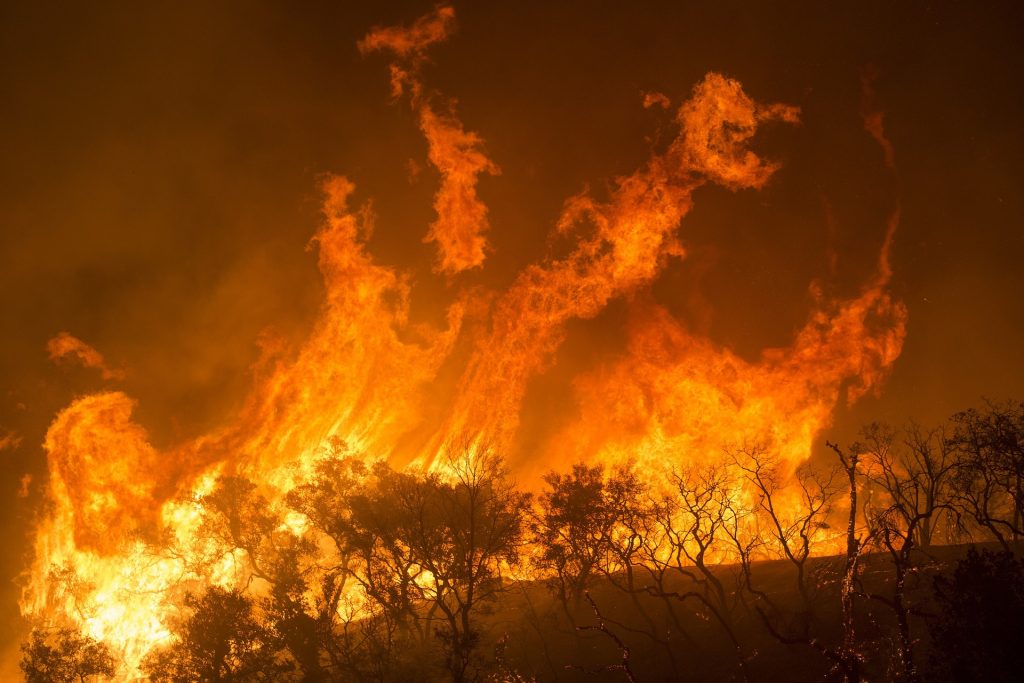The world is fighting forest fires in the midst of a pandemic
Interview with Dr. Andrey Krasovskiy originally published in French: https://journalmetro.com/perspective/2477417/monde-lutte-feux-de-foret-pandemie/
On 25 June 2020 by Miguel Velazquez, Métro World News
Dr. Andrey Krasovskiy is a Research Scholar working with the Ecosystems Services and Management Program (ESM) of the International Institute for Applied Systems Analysis (IIASA), Austria: https://iiasa.ac.at/
He is a Member of the IUFRO Task Force “Fire$: Economic Drivers of Global Wildland Fire Activity”: https://www.iufro.org/science/task-forces/global-wildland-fire-activity/
Q: What is the outlook for forest fires this year?
Forest fires are likely to keep the dynamics from previous years. Along with the problematic regions, such as Amazon, where forest fires are driven by deforestation, and Indonesia, where extremely vulnerable peatland areas are located, considerable fire events are to be expected in boreal forests of Russia, the US, and Canada. The forest fires might also show relative increase compared to previous years in Central European countries. There is a danger that post-quarantine human activities will further add to forest fire frequency in the Mediterranean region, as well as globally.

Q: What percentage of forest fires are caused by humans?
A great deal of forest fires is caused by humans. For example, 95% of fires in Europe are started because of the human activity. Activities such as deforestation in the Amazon region are well correlated with increasing risks of forest fires. Natural source of ignition is lightning strike, which is a more common ignition source in Africa, as well as in Boreal forest. Recent studies show the growing rate of forest fires caused by lightnings in Central Europe, for example in Austria. This is also well proven that one of the main drivers of forest fires – climate change – is of an anthropogenic origin.
Q: Do you consider that there may be some impact on forest fires by Covid-19 and confinement?
Surely, due to the lock down, the suppression efforts are harder to organize, particularly, in emergency situations. Accumulation of fuel, i.e. biomass on the ground available for burning, could happen in some places as well. Those are negative consequences of Covid-19. At the same time when people are in confinement, there is less human activity, meaning lower rates of ignitions. However, when the quarantine is over, I am afraid that human activity, e.g. camping seasons in Mediterranean regions will lead to further increase in fires.
Another opportunity available for governments now is fighting post-Covid-19 unemployment by recruiting staff for green jobs in the domain of fire prevention and firefighting.
Q: How much have we learned in forest fire prevention and what do we still need to learn?
We have learned that the problem is very complex, and it needs an integrated solution. We need to further develop a community that would put together researchers, forest managers, fire fighters, and politicians. Afforestation and restoration activities seem to be a reasonable way to help coping with the forest fire problem. However, those activities require systematic approach including numerous economic and policy actions. Most importantly the general public needs to be included in the activities and educational measures starting early up from school ages. Media can play a very special role in capacity building, information spread, and explaining everyone’s responsibility.
Q: We have known of prominent cases of wildfires in Australia, the Amazon or California in recent years. Where else is at greatest risk in this 2020?
I am afraid that the Amazon forest will again be a hotspot this year. As already mentioned, I foresee the risks of extreme fires due to post-Covid-19 human activities in various parts of the world, that are vulnerable to forest fires. Even though by using wildfire models (e.g. FLAM, www.iiasa.ac.at/flam) we are constantly improving our ability to better predict and project the possible time and locations of the forest fires occurrences, their types and the area burned, increasing risk due to climate change will keep us even more alert and prepared for fires in all continents and regions. Particular attention has to be paid to densely populated areas in Europe, the US, and Asia. The largest burned areas will still appear in the boreal forests in the northern hemisphere and tropical south.
Q: If you would like to add something, it is well received.
I would like to stress the importance of considering forest fire risks in special zones, such as protected zones and exclusion zones. For example, while almost no ignition is possible inside the highly radioactively contaminated Chernobyl exclusion zone (border area between Ukraine and Belarus), there are neighboring settlements, where human induced fires frequently escape into the contaminated zone. Here the risk exists that radioactive particles are spreading with the smoke of the fire into the atmosphere. The wildfire spreading through the exclusion zone is extremely hard to suppress due to the limited infrastructure, and prevention is difficult due to limited forest management possibilities (e.g. removal of dead wood, litter, etc.) in the “no-go” zones.I would like to stress the importance of considering forest fire risks in special zones, such as protected zones and exclusion zones. For example, while almost no ignition is possible inside the highly radioactively contaminated Chernobyl exclusion zone (border area between Ukraine and Belarus), there are neighboring settlements, where human induced fires frequently escape into the contaminated zone. Here the risk exists that radioactive particles are spreading with the smoke of the fire into the atmosphere. The wildfire spreading through the exclusion zone is extremely hard to suppress due to the limited infrastructure, and prevention is difficult due to limited forest management possibilities (e.g. removal of dead wood, litter, etc.) in the “no-go” zones.

Leave a Reply